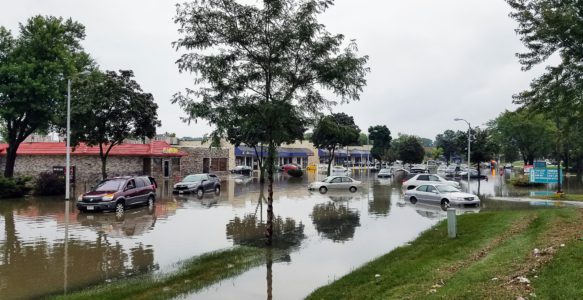The Center for Economic and Policy Research
See the original article here.
The National Flood Insurance Program (NFIP) is a program run by the Federal Emergency Management Agency, and it provides flood insurance to at-risk homeowners and businesses in over 20,000 participating communities across the US, totaling over 4 million policies in force. The NFIP is the main provider of flood insurance, and at a time when extreme storms and river flooding are increasing nationwide, the program has the opportunity to expand to cover homeowners in areas that previously weren’t considered vulnerable to disaster. However, the NFIP’s financial future is uncertain.
Before Hurricane Katrina in 2005, claims rarely outpaced premiums, as shown below. But the program has been running a deficit since Katrina, and the federal government, under the Treasury, has supplied loans to keep it going in the face of subsequent disasters. At the end of 2022, the NFIP owed the Treasury $20.5 billion, with interest totaling $300 million for the year. That number equals almost $1 million in interest daily. The program’s current borrowing limit with Treasury is $30.4 billion, leaving the NFIP $9.9 billion in available borrowing authority.
Before Hurricane Katrina, the NFIP was able to pay off debt, including interest, keeping the program financially solvent. However, as illustrated in the figure below, losses during the 2005 hurricane season drove the program to more than $16 billion in debt. In 2017, Congress eliminated $16 billion of the program’s debt. FEMA has asked Congress again to forgive the program’s debt, but Congress has replied with a collective shrug. Forgiving the debt isn’t enough, though. Treasury’s terms for borrowing need to be renegotiated since the amount in interest the NFIP pays is taking money away from flood mapping, floodplain management, and other mitigation efforts.
With the Republican-led Congress aiming to reduce the national deficit by cutting critical services, it is unclear whether the NFIP will receive future subsidies. On top of this, the NFIP is constantly under threat of being outright terminated. Congress typically reauthorizes the program via continuing resolutions. Political showdowns, like the one experienced over the weekend, have increased the number of short-term reauthorizations. According to the National Association of Realtors’ Chief Advocacy Officer Shannon McGahn, “The NFIP’s authority to write flood insurance has been extended 25 times since 2017 alone.” In the case of the current standoff, the debate will begin anew in November.
The NFIP deserves long-term authorization and funding to create stability for homeowners. But it can’t do that with one hand tied behind its back by mounting debt and an apathetic Congress.



